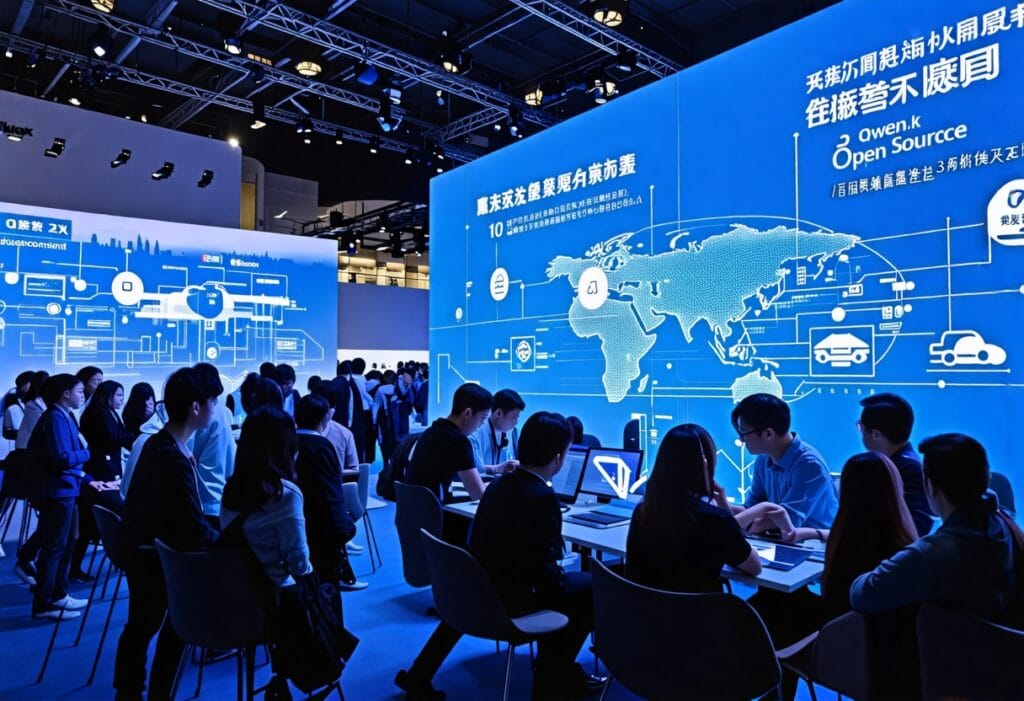The US-China AI Chip Race: Cambricon’s Milestone Profit

The US-China AI Chip Race: Cambricon’s Milestone Profit
As the US-China AI chip race heats up, the recent news of Cambricon Technologies achieving its first-ever quarterly profit marks a pivotal moment in the competition for dominance in artificial intelligence capabilities. With heightened US export controls limiting access to advanced semiconductor technology, particularly those developed by Nvidia, Cambricon’s financial turnaround—reporting profits of up to 328 million yuan—highlights China’s burgeoning ability to innovate domestically. This transformation from a startup to a major player valued at approximately 300 billion yuan underscores the dynamic shifts in the global tech landscape. Amidst a backdrop of escalating tensions and increased investments in AI infrastructure, Cambricon’s ascent reflects not only corporate resilience but also China’s strategic push towards semiconductor self-sufficiency. For a deeper understanding of the implications of this race, explore more about the global semiconductor industry here.
Cambricon’s Journey to Profitability
Cambricon Technologies’ recent achievement of its first quarterly profit is a significant milestone not just for the company but for the entire Chinese semiconductor landscape. Founded in 2016, Cambricon quickly ascended from a startup to a key player in the AI chip industry, now boasting a valuation of approximately 300 billion yuan. This financial turnaround signifies resilience against a backdrop of strict US export controls that hindered access to advanced technologies like Nvidia’s products. The company’s reported profit of up to 328 million yuan in Q4 2024 is a dramatic shift from previous losses, showcasing its ability to pivot successfully amid a challenging market.
US Export Controls: A Double-Edged Sword
The US’s stringent export controls have tightened restrictions on China’s access to high-performance semiconductor technology, creating a complex environment for companies like Cambricon. Designed to maintain the US’s competitive edge in AI and advanced computing, these sanctions inadvertently catalyzed China’s domestic innovations. Firms are forced to expedite the development of indigenous technologies, pushing local engineers and companies to devise solutions that can match or even surpass US capabilities. A report by the Brookings Institution detailed how these measures have sparked a surge in local investment in research and development, reinforcing the notion that adversity often breeds innovation.
Technological Innovations by Cambricon
At the core of Cambricon’s success is its commitment to technology innovation, particularly in AI chip design. The company’s flagship Cambricon-1A processor has gained acceptance among prominent Chinese tech firms, including Huawei, highlighting its efficacy in the domestic market. The development of 7-nanometre AI chips reflects Cambricon’s strategic initiative to bridge the technological divide with international competitors. These advancements position the company as a formidable player in the AI semiconductor space. The significance of these innovations cannot be understated; they not only align with China’s broader aspirations for self-sufficiency in technology but also create new competitive dynamics in the global semiconductor market.
The Rapid Growth of the AI Semiconductor Market in China
Analysts speculated on the promising trajectory of China’s AI semiconductor market, predicting it could reach a value of 178 billion yuan by 2025. This projected growth is bolstered by the increasing investments from various sectors, particularly technology companies, in building robust AI computing infrastructure. Major enterprises, like ByteDance, have made substantial commitments, such as the 4.5 billion yuan investment in a new computing center in Shanxi province. These moves underline the urgent domestic demand for innovative computing solutions and reinforce the notion that China is poised to cultivate its technological landscape in the face of external pressures. A comprehensive analysis by IEEE reinforces these insights, highlighting the expected rise in demand for AI chips across various industries.
The Strategic Importance of Semiconductor Self-Sufficiency
The push for semiconductor self-sufficiency has become a top priority for China amid mounting geopolitical tensions. Beijing recognizes that dependence on foreign technology can expose its economy to vulnerabilities, particularly in critical sectors like AI. Cambricon’s recent inclusion in the SSE 50 Index further cements its strategic importance to China’s broader technological ambitions. Government policies favoring the semiconductor sector are easing pathways for investment and innovation, creating a supportive ecosystem for companies like Cambricon. Industry stakeholders are optimistic that this focus on bolstering domestic capabilities, coupled with financial incentives from the government, will foster sustained growth and competitiveness.
Challenges Ahead for Cambricon and China’s AI Sector
While Cambricon’s journey portrays a promising narrative, numerous challenges remain on the horizon. The semiconductor industry is known for its rapid technological advancements and intense competition. Companies must continuously innovate to maintain their market positions, requiring significant financial and intellectual investment. Additionally, Cambricon faces the uphill task of narrowing the technological gap with established global leaders like Nvidia, whose market capitalization dwarfs that of Chinese firms. Nevertheless, the backdrop of escalating tensions and increased investments presents unique opportunities for growth. Continued support from the Chinese government and an expanding domestic market can serve as catalysts for overcoming barriers in this ambitious pursuit of AI chip supremacy.
Conclusion: The Future of AI Chip Development
The trajectory of Cambricon Technologies within the increasingly competitive landscape of the US-China AI chip race demonstrates a critical pivot towards innovation and self-reliance. As China amplifies its investments in semiconductor technology, the industry’s evolution will likely unfold with both challenges and unstoppable momentum. While the road ahead is riddled with complexities, the Chinese semiconductor market is gaining momentum, paving the way for transformational advancements in AI technologies and applications.
Looking Ahead in the US-China AI Chip Race
The remarkable achievement of Cambricon Technologies in reaching profitability signals a defining moment in the US-China AI chip competition. With the company reporting a profit of 328 million yuan for Q4 2024, it exemplifies China’s rapid ascent in innovation despite strict US export controls. This growth underscores the broader trend towards semiconductor self-sufficiency, crucial for navigating geopolitical challenges. As the Chinese AI semiconductor market is projected to thrive, driven by extensive investments from domestic firms and government support, the journey is just beginning. To stay informed about the expanding landscape of semiconductor technology and its global implications, check out this insightful resource on the semiconductor industry. Embrace the opportunity to witness and participate in this dynamic sector that is poised for explosive growth and transformative advancements.















































































































